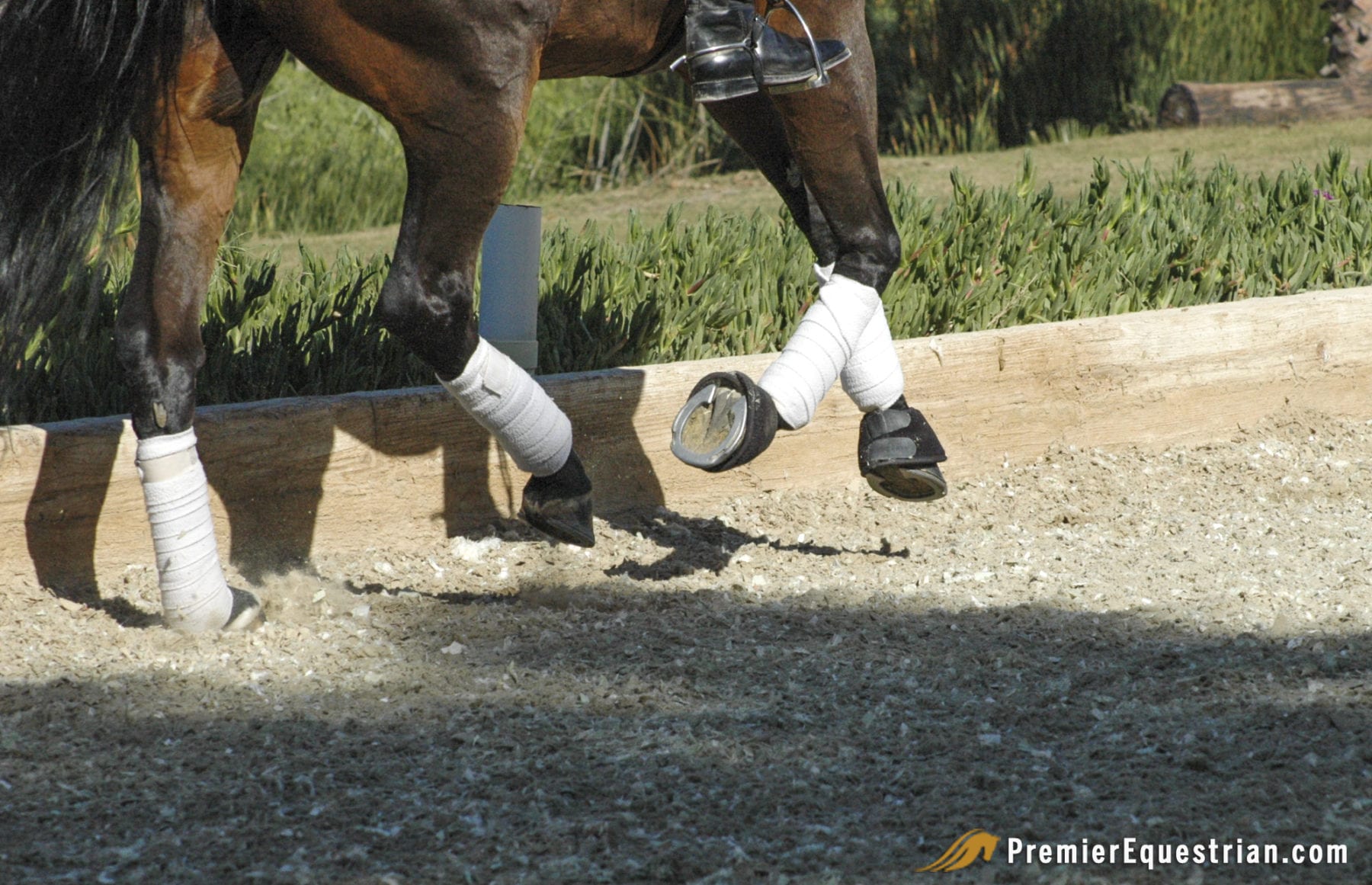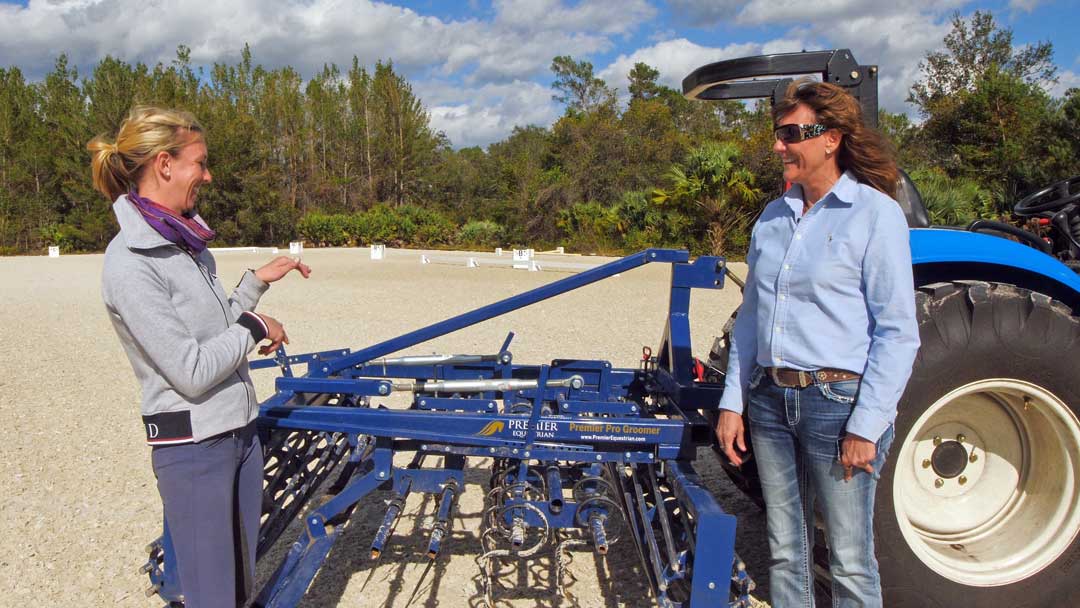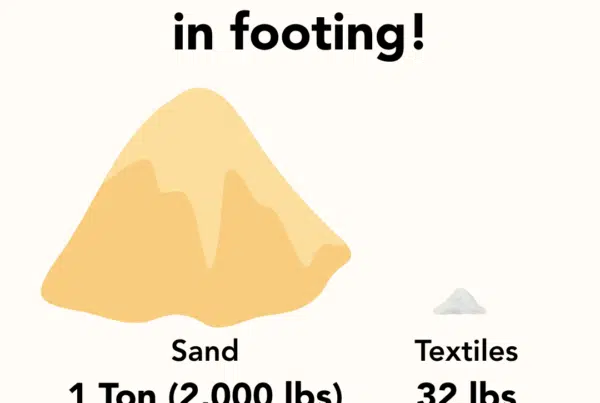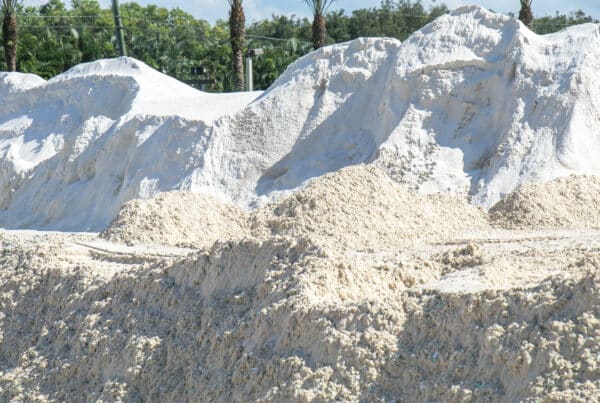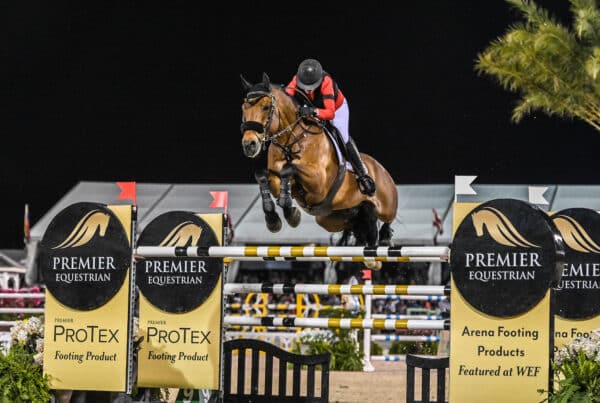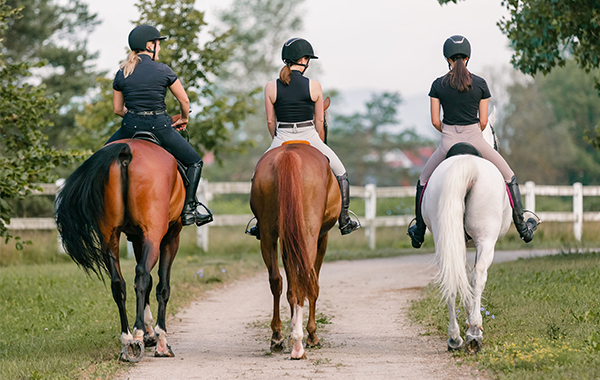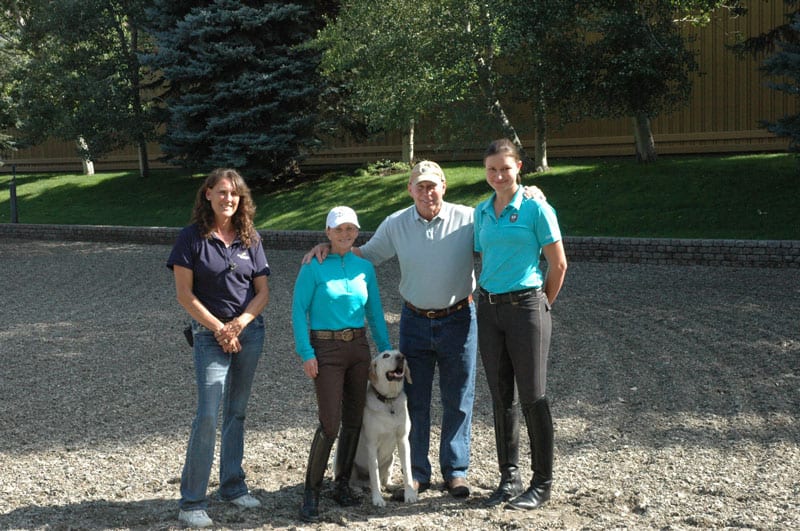
By Heidi Zorn, Premier Equestrian
Attention to footing and riding surfaces is gaining momentum and awareness throughout the equestrian community. I see the topic of footing much like the topic of saddle fitting several years ago. I remember those old saddles and that they all magically fit every horse, all the time. The thought that the saddle wasn’t fitting correctly never occurred to us, let alone that the saddle could be causing injuries to our horses. Then a whole slew of new information came out about the importance of a properly fitting a saddle and a big light bulb came on for the entire community. I see the same thing happening today with footing, and it is becoming an important feature in our horses training and care.
Throughout my years in this industry I have been fortunate enough to have the opportunity to work with a fantastic team of professionals to identify footing qualities and how they affect our horses. I’ve worked with farriers, vets and most importantly some of the country’s top riders, including Laura Graves, Debbie McDonald, Adrienne Lyle, and Steffen Peters, to take practical applications and materials and turn them into defined terms.
Adrienne Lyle, Bob and Debbie McDonald
Some of my first influential teachers were Bob and Debbie McDonald and their protege, Adrienne Lyle. Beyond being amazing horsemen, they also were pioneers in being some of the first adopters to use synthetic materials with sand in the United States. Years before I had met them, they had already worked with several different additives. When we began working together, they were well on to using textile and fiber additives.
Bob understood the texture, moisture content and grooming techniques to make great footing, while Debbie and Adrienne knew exactly the feel they were looking for when riding. This dynamo team could always perfect their surfaces. By studying the sand they preferred and the surface qualities they felt, we were able to take this information to our engineer and geologist and find the exact formulation of sand particles shape and sizes, along with moisture content. This was the beginning of turning feel into science.
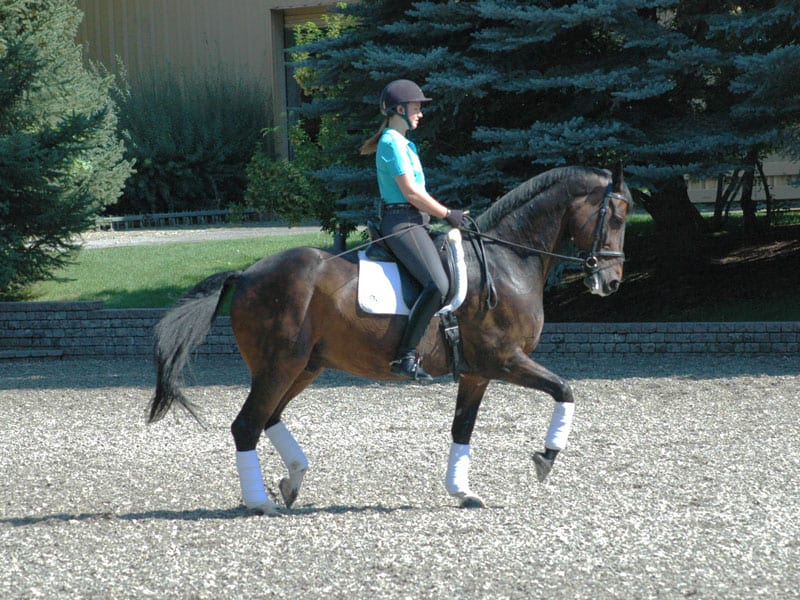
Adrienne Lyle riding Wizard on Premier ProTex footing.
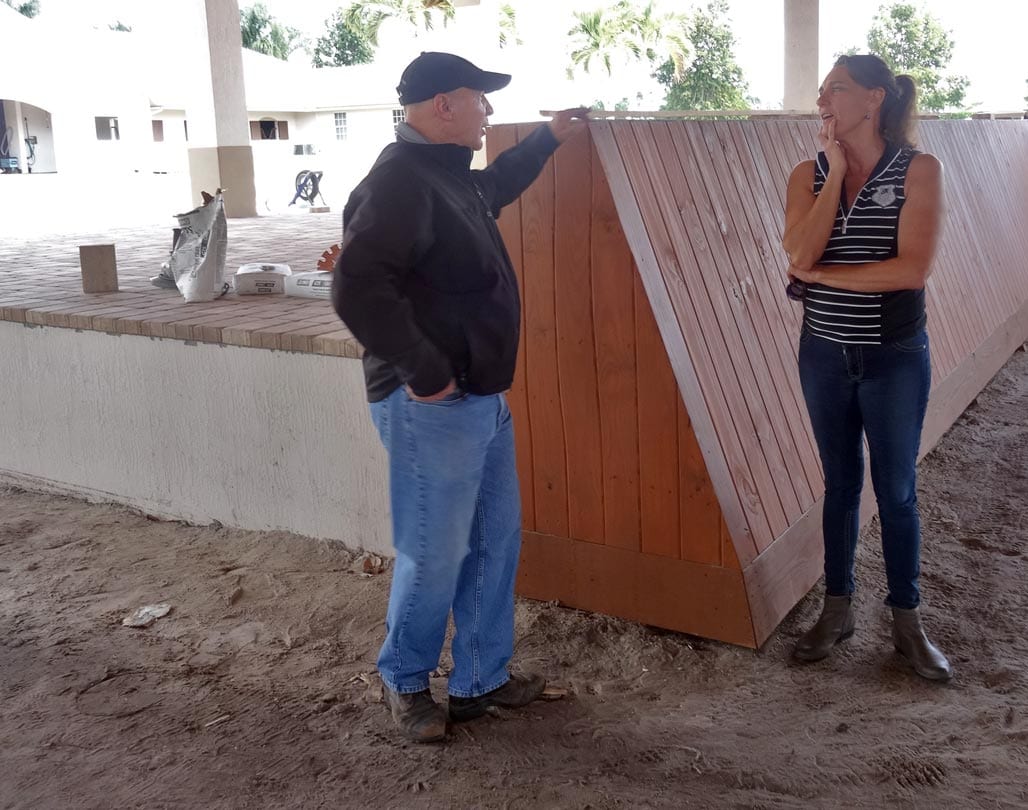
Heidi Zorn and Bob McDonald at TYL Farm’s new indoor arena.
Steffen Peters
What Bob, Debbie, and Adrienne felt was also shared with Steffen Peters. Steffen’s ability to feel the nuance in every stride put our technical skills into overdrive. He could explain when each step was good or bad at different gaits and movements, and identified how the horse was compensating to achieve the task. This led us to further examine how different ratios of sand and fiber to moisture content affected the surface. Steffen’s ability to recognize and communicate what he felt allowed us to analyzed what each recipe provided in terms of surface characteristics.
In Arroyo Del Mar’s first arena, we struggled to get the right amount of stability Steffen wanted. The particle size was not quite fine enough to bind to the additive. To fix this, we incorporated fine sand and different fibers to help keep a more consistent structure while maintaining moisture retention. Several years later, Steffen upgraded his arena to an OTTO Sport PerforatedMat System which provided consistent moisture retention evenly across the entire surface and gave superior stabilization to the sand particles. Not to mention excellent drainage in the monsoon season.
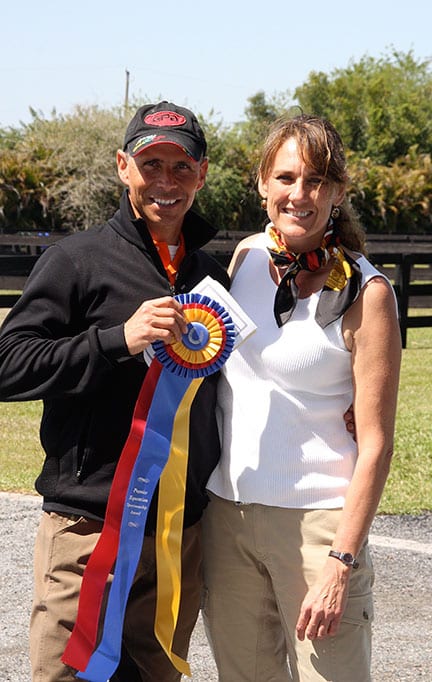
Laura Graves
Along with this team of Olympians was Laura Graves, who gave me even more insight on creating high-performance training arenas. Laura knew exactly what she wanted out of a riding surface and she put our theories to the test. She and Diddy (Verdades) have traveled the world and have ridden on the best competition footings available. However, she did not want a competition surface. She wanted an everyday surface that was conducive to equine biomechanics.
Getting the correct sand was first and foremost the most important aspect in engineering the surface that Laura was looking for. She diligently followed our lead to find the correct sand. After weeks of searching we realized the perfect sand didn’t exist in her area and we would have to formulate a different recipe to achieve the five surface characteristics, using a mix of fibers and textiles in different quantities.
Heidi Zorn and Laura Graves
With help from one of our arena builder, Tony Judge of Olympia Footing, we were able to achieve a surface that Laura was very happy with. Tony is an expert in building arena bases and mixing in footing additives, and we knew he could help us to create the best surface possible. All together, we were able to calculate the correct fiber and textile combinations with the local sand to get Laura’s desired result.
Today Laura is very pleased with her footing formula. Laura told us, “I have an incredible stability, and it’s not hard. I like something in the middle. Every day I walk out with my first horse, and the first thing I do is I turn around and I check the hoof prints and I say it’s spot on!” Laura stated that during the times at home she does not need to do any special shoeing or use pour pads, and the vet confirmed that Diddy’s hoof and sole growth were healthy and to keep doing what she’s doing with her at home surface.
Once again Laura’s exceptional feel and being particular of her home surface led us to some conclusions about how a proper training service should feel verses a competitive venue. Read more about horse show vs. training surfaces.
Part of what makes riders like Steffen, Laura, Debbie, and Adrienne so amazing is their ability to feel the horse and their movements. By taking what they have felt and their experience of riding on different surfaces all over the world, we developed a range of standards. We measured each of the sands they were using and formulated different textiles and fibers at different quantities to come up with what they thought was a perfect feel, thus turning feel into science.

